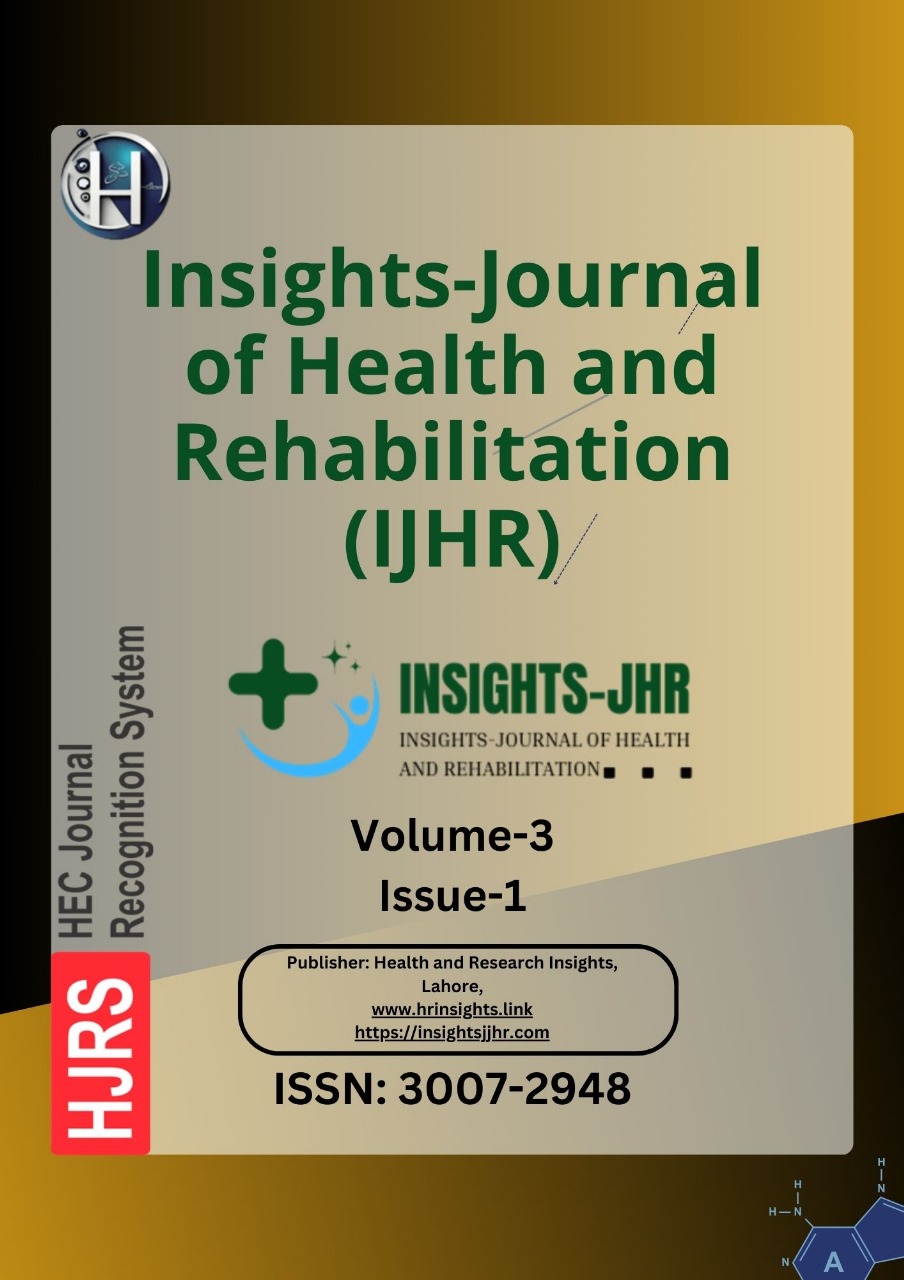IMPACT OF HAND AND ARM BIMANUAL INTENSIVE THERAPY AMONG CHILDREN WITH UNILATERAL SPASTIC CEREBRAL PALSY
DOI:
https://doi.org/10.71000/gse81660Keywords:
Activities of daily living, Cerebral palsy, Children, Functional independence, Motor skills, Quality of life, RehabilitationAbstract
Background: Unilateral spastic cerebral palsy (USCP) is a neurological condition that primarily affects motor function on one side of the body, leading to significant impairments in hand and arm coordination, daily activities, and overall quality of life. Conventional rehabilitation approaches often focus on unimanual training, limiting the development of bimanual skills necessary for functional independence. Hand and Arm Bimanual Intensive Therapy (HABIT) has emerged as a promising intervention aimed at improving bilateral coordination through structured, task-oriented activities by leveraging neuroplasticity.
Objective: This study aimed to evaluate the effects of HABIT on motor function, functional independence, and quality of life in children with USCP, providing evidence for its therapeutic efficacy.
Methods: A randomized controlled trial was conducted on 20 children diagnosed with USCP, recruited from Children's Hospital Faisalabad using a non-probability sampling technique. Participants were randomly allocated into two groups: Group A received HABIT, while Group B served as the control group and underwent conventional therapy, including passive range of motion exercises and stretching. The intervention was administered over 12 weeks, with three sessions per week. Outcome measures included the Bimanual Performance Test (BPM), Functional Independence Measure (FIM), and Quality of Life Score (QoL). Data were analyzed using SPSS, with statistical significance set at p < 0.05.
Results: Post-intervention assessments demonstrated significantly greater improvements in Group A compared to Group B. The BPM scores increased from 25.6 ± 4.2 to 32.1 ± 3.9 in Group A, while Group B showed a lesser improvement from 24.8 ± 3.8 to 27.5 ± 4.0 (p < 0.001). FIM scores improved from 40.2 ± 5.3 to 48.7 ± 4.8 in Group A, whereas Group B increased from 39.7 ± 5.1 to 43.1 ± 5.0 (p < 0.001). Similarly, QoL scores improved from 65.3 ± 7.4 to 72.9 ± 6.2 in Group A, compared to 64.2 ± 7.1 to 66.8 ± 7.0 in Group B (p < 0.001).
Conclusion: The findings support the efficacy of HABIT in significantly improving bimanual motor function, functional independence, and quality of life in children with USCP. The structured, intensive nature of the intervention suggests its potential as an effective rehabilitation strategy for pediatric neurorehabilitation.
Downloads
Published
Issue
Section
License
Copyright (c) 2025 Menahil Ahmed, Yasir Ali Kazmi, Hafiz Muhammad Umair Ali, Sehrish Khan, Abeer Bhatti, Maria Sajid, Ahmad Saeed Choudhary (Author)

This work is licensed under a Creative Commons Attribution-NonCommercial-NoDerivatives 4.0 International License.







